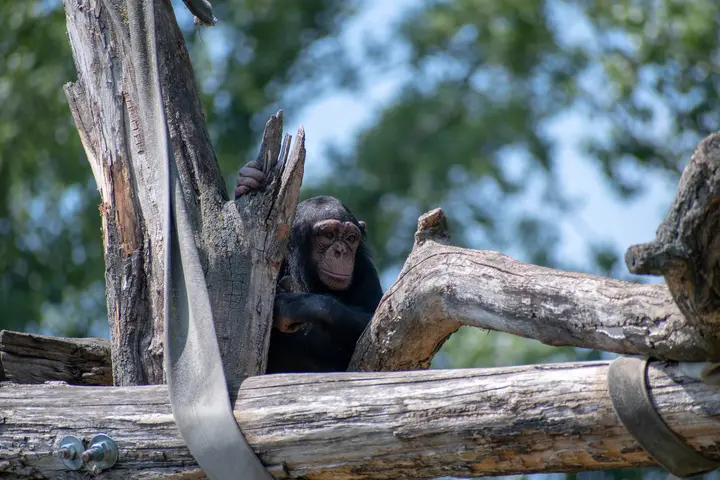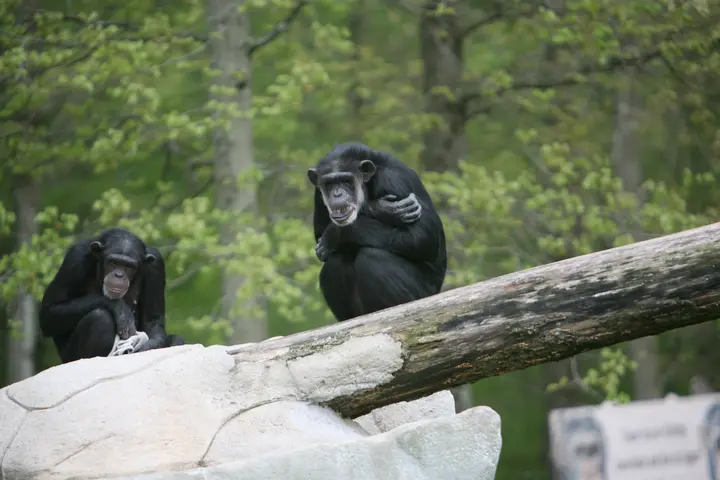Chimpanzees were first seen using human warfare techniques
Chimpanzees have been seen in the forests of West Africa performing behavior never seen before. In order to spy on rival gangs, chimpanzees go to high ground to gather information and gain better visibility, and then use this "reconnaissance information" to determine their next steps. This is an ancient technique known in human warfare, but it expresses a behavior in the life of chimpanzees that has not been mentioned before.
Show key points
- Chimpanzees in West Africa have been observed using high ground for reconnaissance to monitor rival groups, a behavior previously undocumented in their species.
- This strategic behavior was identified during a three-year study in Côte d'Ivoire carried out by the University of Cambridge and the Max Planck Institute.
- Researchers tracked 58 individual chimpanzees from two neighboring groups using GPS data and more than 21,000 recorded observation hours.
- ADVERTISEMENT
- These primates frequently patrolled territory borders silently and in coordinated subgroups, much like military formations.
- Observations revealed that chimpanzees use elevated terrain primarily when approaching a rival area and avoid it on their return, suggesting strategic use of topography.
- The likelihood of territorial advancement increased with greater visibility of rivals, rising from 40% to 60% as distance between groups grew.
- Scientists propose that such tactical behavior reflects advanced cognitive skills and may provide insights into the evolutionary roots of human warfare.

This remarkable behaviour was documented in Thailand's National Park in Côte d'Ivoire during a three-year study conducted by the University of Cambridge in collaboration with the Max Planck Institute for Evolutionary Anthropology.
The team collected GPS data and more than 21,000 record hours tracking two adjacent groups of Western chimpanzees, totalling 58 monkeys.
Recommend
The two areas of these two groups of shouts (the collective name apparently given to chimpanzees) were adjacent to each other and often had to compete for resources, which could turn into violence.

Research observations showed that chimpanzees were regularly patrolling the border in order to reassert the boundaries of their loosely defined area.

Patrols were often conducted in subgroups that stayed close together and made no noise. As an observer, you will feel that patrols have started in that the monkeys move and stand at the same time, as it kind of happens while hunting." Dr Sylvain Lemoine, lead author of the study who is an expert in biological anthropology at the Department of Archaeology at the University of Cambridge, said: "A common feature of these journals is that chimpanzees go towards the higher plateau zone as they move towards the border, where conflict usually occurs. However, they tend to avoid these hills when returning to their area, where they choose the easiest and most flat route.

The next chimpanzee movements appear to be dictated by information gathered from the top of the plateau. After observing rival monkeys, the probability of advancing into hostile territory increases from 40 percent—when the two competing groups were within 500 meters (1,640 feet) of each other—to 50 percent when this distance was 1,000 meters (3,280 feet), until it reached 60 percent when the two groups were within 3,000 meters (9,842 feet).
The researchers argue that this behavior not only shows the cognitive abilities of the closest living creatures to us, but may even shed light on the origins of human warfare as well.

Tactical warfare is an engine of human evolution," explains Dr. Lemoyne. "This behavior of chimpanzees requires complex cognitive abilities that help defend or expand their territory, which is preferred by natural selection." "The exploitation of the landscape for land control is deeply rooted in our evolutionary history. "We may see in chimpanzees' use of this war-like strategy as traces of primitive, small-scale warfare that may have existed in prehistoric hunter-gatherer societies."
The new study was published in the journal PLOS Biology.








